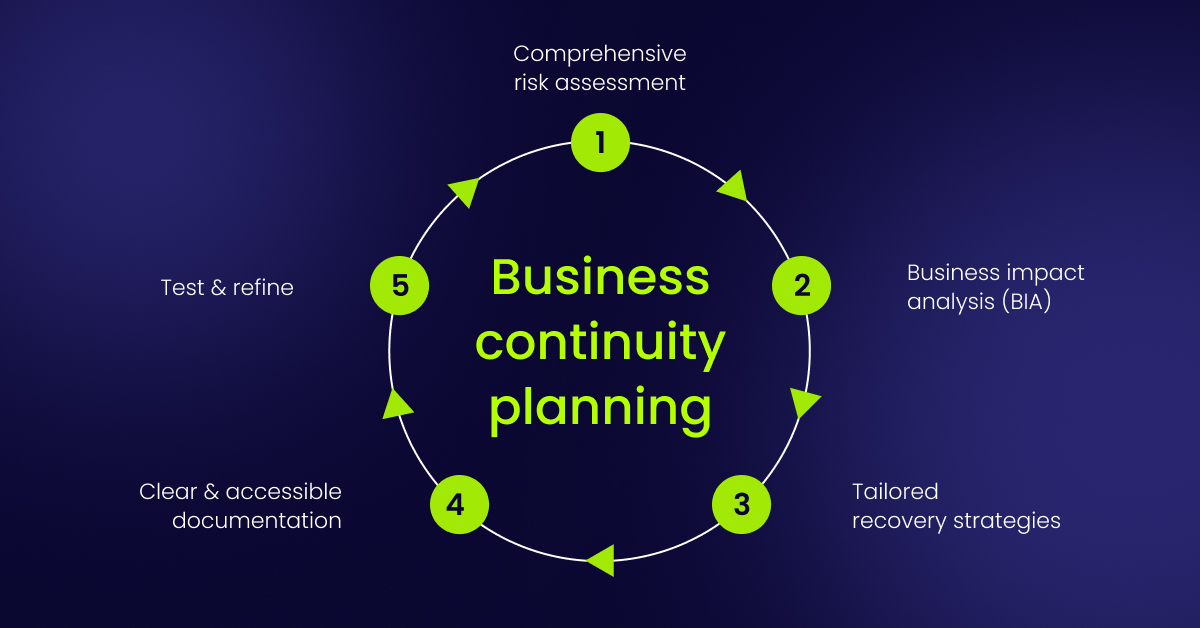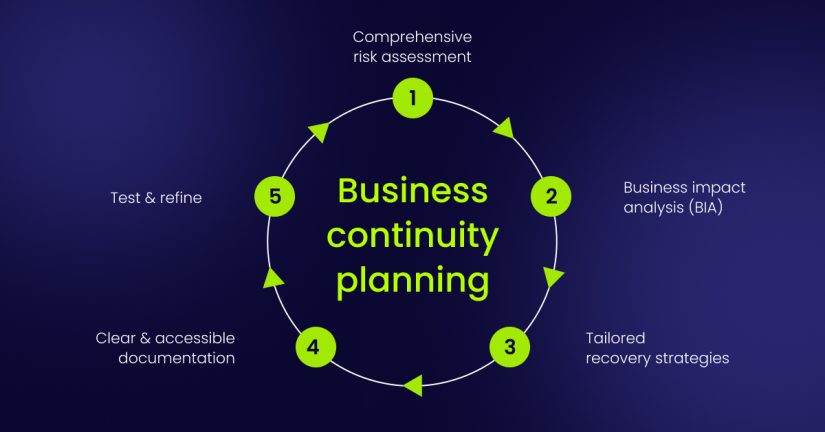
If the past few years have imparted any lessons to businesses, it’s that uncertainty is an ever-present factor. From worldwide pandemics to cyber attacks, natural calamities, and disruptions in supply chains, entities have come to understand that wishful thinking is not a strategy. Being equipped for uncertainty is vital, rendering business continuity planning indispensable.
At the heart of successful continuity planning lies enterprise risk management, which empowers businesses to recognize risks and understand their cascading effects. This methodology transitions organizations from a reactive stance to a proactive one, emphasizing resilience. This concept is no longer exclusive to large enterprises—organizations of all sizes, from startups to multinational corporations, are participating in risk management.
**The Tangible Consequences of Failing to Prepare**
Imagine operating an online retail outlet when a cyber attack compromises server accessibility overnight. Lacking a business continuity plan, disorder ensues: IT is inundated, customers are frustrated, and revenue declines with every moment that passes. Conversely, with a well-thought-out plan, you’re aware of whom to reach out to, which contingencies to engage, and how to inform customers, thereby averting a minor issue from escalating into a disaster. Customers evaluate businesses by their reactions during crises, and this often influences loyalty.
**Business Continuity: Beyond Just Paperwork**
Business continuity planning should not merely exist as a formality or a report left untouched. It needs to become a living mindset woven into everyday activities. Organizations that incorporate continuity as a continuous conversation, instead of an annual task, are more equipped to handle unforeseen challenges. This involves instilling a readiness culture within the company, turning resilience into a regular element of business practices.
Effective continuity planning necessitates addressing fundamental inquiries regarding essential operations, staff, recovery periods, and maintaining communication under duress. When these are revisited frequently, teams cultivate a ‘muscle memory’ that allows for quicker, more assured actions amid crises.
**Employee Experience and Business Continuity**
The implications of continuity planning on personnel are frequently underestimated. In times of crisis, staff seek direction, clarity, and leadership. A well-conceived continuity plan not just steers the organization but also gives employees a definitive path and purpose, boosting their involvement during disruptions.
The transition to remote work underscored this point. Organizations that had integrated remote work into their continuity frameworks maintained employee engagement and productivity during transitions to new working arrangements. Prioritizing people in continuity planning is both responsible and advantageous for businesses.
**Customer Trust Begins with Readiness**
Customers remain unaware of the internal crises during disturbances; they perceive delays, outages, or absence of communication. In the present competitive landscape, trust is delicate, and a single lapse can drive customers to rivals. Investing in business continuity signifies investing in client relations, ensuring uninterrupted service even in challenging times, and signaling to customers that their time and trust are esteemed.
**The Significance of Technology in Continuity**
Technology serves as a double-edged sword; preparation dictates its utility. Continuity strategies should include automatic backups, cloud solutions, cybersecurity measures, and digital communication, regularly assessed for reliability in stressful situations. Organizations that routinely test and practice their systems can rebound quickly from obstacles.
**Insights from Experience: Lessons Learned**
Experience reveals that resilience is cultivated, not a given trait. Many organizations neglect the importance of continuity until a significant disruption strikes, often when the damage is beyond repair. Reactive continuity planning is both perilous and costly, impacting finances and reputation.
Successful enterprises share certain practices: transparent leadership, continuous risk assessment, clear communication, and flexible operations. These are not simply systems but habits nurtured daily to establish a sturdy foundation of resilience sharpened by experience.
**Establishing Continuity Planning as a Daily Routine**
Start with small steps and remain consistent. A detailed policy is not required to initiate the process. Conduct a risk assessment, converse with department leaders, pinpoint vulnerable processes, and arrange annual simulations. Over time, these actions will become ingrained, leading to a confident team, better customer relations, and a company ready to face the unexpected.
**It’s About Achieving Tranquility**
Business continuity planning is not just for the most adverse scenarios; it strengthens daily operations. It serves as the foundation for the company, encouraging bold advancements, new initiatives, and calculated risk-taking. In its absence, even the most promising projects are at risk. Risk management ensures that organizations can not only withstand disruptions but also adapt and grow from them. In an ever-evolving world, this resilience is crucial.
